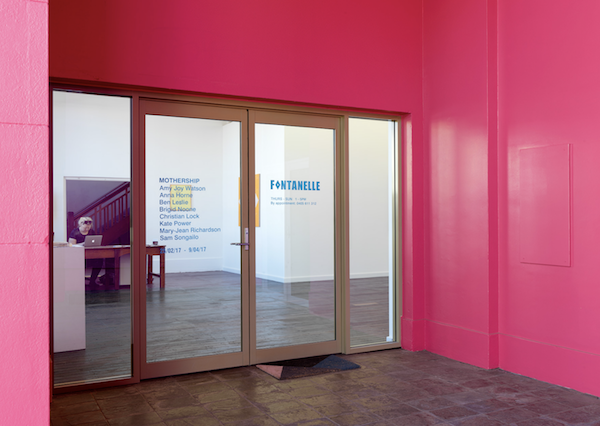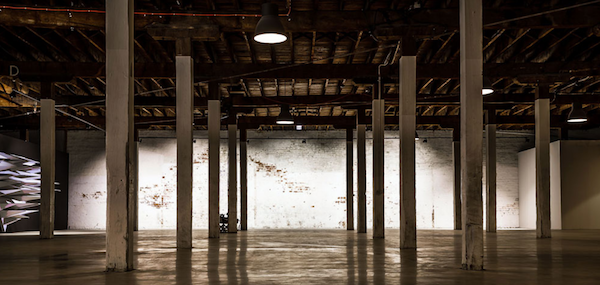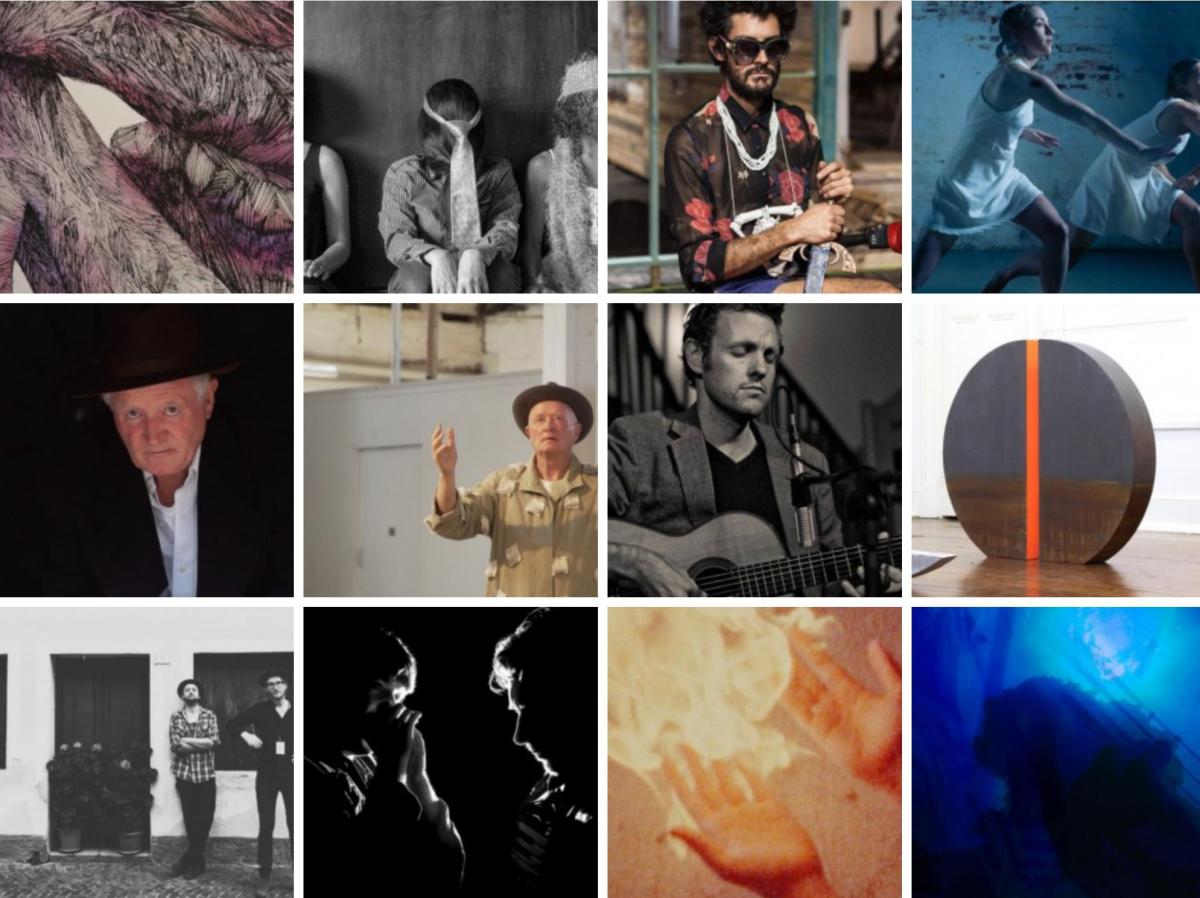A diverse and energised program at PSAS in Fremantle (WA); courtesy PSAS
Internationally renowned artist Patricia Piccinini spoke at the recent NAVA conference Future/Forward about how running an ARI – an artist run initiative – in Melbourne in the late 1990s, had laid the foundations for her career.
Her observations were raw and real. ARIs throw many career curveballs, as well as offer an opportunity for artists to grow their CVs and professional experience. That story, however, extends well beyond the cities of Melbourne and Sydney.
Read: Patricia Piccinini on Running an ARI
At ArtsHub, we were curious whether the same story held for spaces that have emerged in regional and distant metropolitan locations? While ARIs have historically clustered in the bigger cities, where the major art schools are located, they are not exclusive to dense urban locations.
ArtsHub spoke with directors of three ARIs – PSAS in Fremantle (WA), Story Artist Run Collective in Toowomba (QLD), and Fontanelle Gallery & Studios in Port Adelaide (SA) – to ascertain whether their motivations were similar, and whether it was a tougher gig than their city counterparts?
Brigid Noone, co-directors of Fontanelle Gallery & Studios in Port Adelaide told ArtsHub: ‘I agree with Patricia [Piccinini], working within the ARI sector has played a major part in contributing to the foundations of our individual careers.’

Image courtesy Fontanelle Gallery & Studios
Are smaller towns more receptive to ARIs?
If Toowoomba is anything to go by, then one might be convinced that regional Australia is a hotbed for artist run spaces.
Co-founder of the recently formed StoryARC, Ben Tupas told ArtsHub: ‘Toowoomba, even though people would assume otherwise, has a strong history of ARIs such as the GRID hybrid arts collective (of which I was a founding tenant) and others such as Raygun Projects, Made Gallery, the Attic Art Space and Kontraband.
‘We weren’t reinventing the wheel, we were just thinking of how we could make the wheel better. We were also trying our best to make sure the route we were taking took on board the full gamut of the experiences local ARIs that had come before us,’ Tupas said.
PS Art Space (PSAS) is a further case in point. It has been going since 1994, when it opened in a large converted warehouse in Fremantle’s West End precinct.
‘It was formerly a community painter space with approximately 10 long term tenants. It is now a full house with over 40 tenants engaging with the studio program, a programmed exhibition/project space, and more,’ said current Artistic Director, Tom Mùller.
Initially called Allegretta Studios, it then changed its name to Paris Schairer Art Studios & Gallery, and most recently relaunched from an address (Pakenham Street Art Space) to an entity, PS Art Space (PSAS) in 2012.
Mùller told ArtsHub: ‘The whole experience was a true journey, and was initially developed to enable other peers and contemporaries to ply their “trade” within affordable and accessible spaces.’
Mùller added that he got involved in an ARI more by ‘a feeling, and by entering into a conversation with the other studio artists at the time’.
Both stories demonstrate a need for space where artists can work and show outside of our major cities, ARIs that are sustained through the support of a community.
Tupas admits that, ‘there were a few reasons for starting Story Artist Run Collective, but it was essentially down to the “right place, right time”’.
With collaborator Sarah Peters, he identified storytelling as the unifying element that would underpin the ARI and that actions like collaboration, experimentation and regionalism would define – loosely or otherwise, what they would create, exhibit and focus upon.

Big things can happen at the edges; PSAS in Fremantle (WA); courtesy PSAS
The challenges have nothing to do with location
While one might have suspected that the greater challenge of running an ARI outside of the major cities would have been local stereotypes and perceptions surrounding artist led enterprise, it would appear, rather, that the challenges are exactly the same as city-based ARIs – time and traffic.
Piccinini reminded that despite a larger population enjoyed by cities it is still not a formula for successful engagement. She said: ‘I learnt who came to artist run spaces – and mostly, not many people came.’
If anything, the track record of ARIs in Toowoomba would indicate that this regional Queensland town, on the contrary, has a strong and long history of engagement.
Tupas said the greater challenge was: ‘Admin, and the admin hustle, are the greatest challenge of being an artist, and it extends to running an ARI. I suppose time really is the biggest challenge. I want to get my current split of 80% arts hustle and 20% art making into something more balanced.’
Mùller added of the internal challenge of balance. ‘The sense of community is paramount to the healthy eco-system of the precinct, so making sure that all voices are heard whilst also retaining a sense of the original vision that we had in mind can at time be challenging.’
For him it came down to creating ‘a sense of currency and relevance whilst remaining accessible and affordable’ that applied the greatest pressure.
It was something that Noone and co-director Ben Leslie, at Fontanelle Gallery & Studios in Port Adelaide related to. Their greatest challenge has been to maintain their own practices as individual artists. ‘We have chosen not to apply for any regular organisational funding, so we didn’t become bogged down with admin and acquittals, but finding a way to achieve some sort of balance as Artists and directors of Fontanelle has at time been challenging,’ they told ArtsHub.
Dealing with Boards and Incorporation
While an ARI might have its group of like-minded founders, a network primed for action, and a space sorted, one of the greater unspoken challenges to set up is the question of liability, incorporation, strategic planning, fiscal responsibility – big gallery concerns for small gallery vision.
We asked these ARI directors how formal they needed to become in their journey, and whether requirements were more relaxed when removed from city red tape and development pressures.
Mùller said that PSAS started as a rather informal model, which then was remodelled to meet the market demands. ‘The entity is run as a Trust with a lean and very committed staff, employed on a part-time basis who are themselves practicing artists.’
He added: ‘As a team we have developed a more professional outfit to meet the new market demands, and needed to become innovative to remain financially viable.’
Tupas said that storyARC had become an incorporated association from the start. It was the same route that Fontanelle has taken.
‘We have a management committee. We decided to go down this route to allow us to apply for, and auspice our own grants, and to have a transparent and democratic process. It’s important that the process captures the group sentiment, not just the ideas and aspirations of the loudest or the most experienced,’ Tupas said.
Noone added: ‘We are incorporated, we have a very small internal board, allowing us to make decisions that suit our unique model. Being incorporated has been very beneficial particularly when applying for project funding.’
How to stay sustainable … and funded
At PSAS, Mùller has to deal with a long waiting list for exhibitions, with a program booked two years ahead. ‘The entire enterprise is supplemented by frequent venue hires in the form of large functions and other activities, which enables the entity to remain financially viable,’ he told ArtsHub.
Mùller added that on top of gallery and venues hire, the modest rents from the 36 studios has helped PSAS remain a vibrant and thriving ARI.
Tupa, however, works with a slightly different model.
‘We were lucky to tap into some unexpected start-up funding from the start. We’ve just had our first group show in a space we sublet from a really supportive architect. But all of this takes planning, negotiation, good communication and thoughtful ‘hustle’ infused with artistic integrity,’ he said.
Tupas added: ‘For digital and new media artists who were already doing things individually, an ARI meant a way of organising and formalising a community of like-minded practitioners for strategic reasons such as accessing funding and practical reasons such as a better way of sharing our collective knowledge and energy.’
Similarly, Fontanelle has developed out of a favourable rental agreement. Noone explained: ‘When we started Fontanelle in 2012 we signed a three-year lease, and we were open to the idea that it would last as long as access to the space did. We ended up moving to Port Adelaide to an amazing building for a peppercorn rent at the beginning of last year. Our Bowden space was a rented under a subsidised lease and we have only just ended the lease, unfortunately, our landlord Renewal SA (Government developer) tripled the electricity, so it was no longer viable.’
She continued: ‘I don’t think I went into it blindly, but I definitely had a naive idea of sustainability. The main point of difference between Fontanelle and other ARI’s I had been involved with was that our first location at Bowden operated in a space big enough to include studios, and this has been the main source of our income. Our early ideas of sustainability didn’t take into account paying ourselves, just maintaining our costs was a short-term vision of sustainability.’
Advice on starting an ARI, from those who have
Tupas advice was simple: ‘Let your idea of an ARI have time to gestate. Don’t rush in. Think about what you want to get out of it and also check in to see if your thoughts are similar to your peers.
‘Tap into the knowledge of people who are or have been part of an ARI and ask them questions. Have an open mind. An ARI can allow you to stay within your comfort zone – or allow you to be inclusive and invite new audiences into discovering what you do,’ said Tupas. ‘The greatest lesson is staying fluid and being patient. We don’t have an all-or-nothing approach to storyARC because the demands of our individual lives need to be balanced with our artistic aspirations, projects and priorities.’
This was echoed by Mùller, who advised ‘not to plan to far ahead, to be open to idea of ongoing collaborations, and to remain fluid and elastic with your expectations of how your practice will develop.’
Noone’s added: ‘I think its important for new ARI’s to remember that they have the opportunity to play with the gallery model. I would suggest that anyone starting an ARI can uniquely invent new conventions under the ‘galley/studio model’ to take risks and make the most of being independent.’
Tupas’ best advice, however, is golden – and often overlooked when starting an ARIs, regardless of location. ‘All good things will have a season. Allow things to evolve and call last drinks on things that aren’t serving the ARI anymore in a positive way.’





